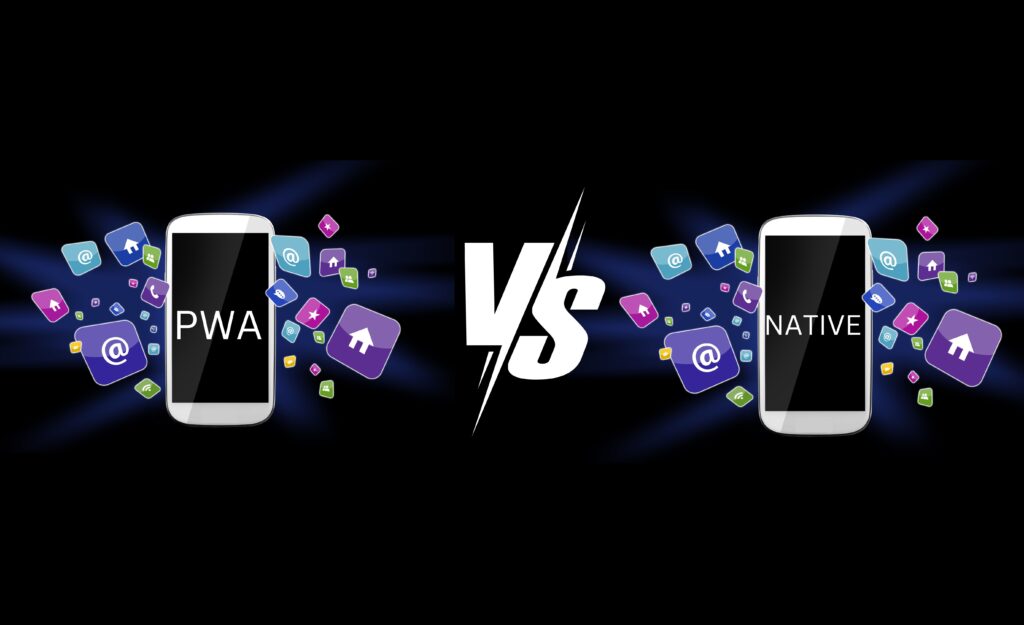Progressive Web Apps vs. Native Apps: How to Make the Right Choice?

Progressive Web Apps vs. Native Apps: How to Make the Right Choice?
In today’s digital landscape, businesses and developers often face the challenge of choosing between Progressive Web Apps (PWAs) and Native Apps. Each option has unique advantages and potential drawbacks, making the decision highly dependent on specific business needs and goals. This guide aims to help you understand the key differences between PWAs and Native Apps and how to determine which is the best fit for your project.
What is a Progressive Web App (PWA)?
A Progressive Web App is an application software delivered through the web, built using standard web technologies like HTML, CSS, and JavaScript. PWAs are designed to work on any platform that uses a standards-compliant browser. Key features of PWAs include:
- Cross-Platform Compatibility:
PWAs provide a consistent user experience across desktops, tablets, and smartphones.
- Offline Functionality:
With service workers, PWAs can function offline or in low-network conditions by caching resources.
- No Installation Required:
Users can access PWAs directly from their web browser without needing to download and install them from an app store.
- Push Notifications:
PWAs can send push notifications to users, keeping them engaged even when the app isn’t open.
- Automatic Updates:
PWAs update automatically, ensuring users always have the latest version without needing to manually update the app.
What is a Native App?
A Native App is developed specifically for a particular mobile operating system (iOS or Android) and is installed directly onto a device. Key characteristics of Native Apps include:
- Platform-Specific:
Native Apps are built using platform-specific languages and tools (Swift or Objective-C for iOS, Java or Kotlin for Android), resulting in highly optimized performance.
- Access to Device Features:
Native Apps can fully leverage device hardware and OS-specific features, such as the camera, GPS, and sensors.
- Superior Performance:
Native Apps often deliver smoother performance and faster load times.
- App Store Presence:
Native Apps are distributed through app stores (Apple App Store, Google Play Store), which can enhance visibility and credibility.
- Robust Security:
Native Apps benefit from the security measures provided by the operating systems and app stores.
Key Factors to Consider
When deciding between a PWA and a Native App, consider the following factors:
- Target Audience: Determine which devices and operating systems your audience primarily uses. If your audience is diverse, a PWA may offer broader reach.
- Functionality Requirements: Assess the features and functionalities your app needs. If your app requires deep integration with device hardware, a Native App might be the better choice.
- Development and Maintenance Costs: PWAs typically have lower development and maintenance costs as they require a single codebase for all platforms. Native Apps, however, may involve higher costs due to the need for separate codebases for iOS and Android.
- User Experience: Consider the level of user experience you want to provide. Native Apps often offer a more seamless and responsive experience, while PWAs can provide a near-native experience with the added benefit of cross-platform compatibility.
- Distribution Strategy: Think about how you want to distribute your app. If being present in app stores is crucial for your business, a Native App is necessary. PWAs, on the other hand, can be easily shared and accessed via URLs.
Making the Decision
Choosing between a PWA and a Native App ultimately depends on your specific project requirements, budget, and long-term goals. Here’s a quick summary to help guide your decision:
- Choose a PWA if: You need a cost-effective, cross-platform solution with offline capabilities and easy access via a web browser.
- Choose a Native App if: You require high performance, deep integration with device hardware, and a presence in app stores.
By carefully evaluating your needs and considering the strengths and weaknesses of each option, you can make an informed decision that aligns with your business objectives and enhances your users’ experience.
Should you require any assistance or further guidance, you can contact us. Our team is readily available to support you and address any queries you may have. We’ll be more than happy to assist you.


